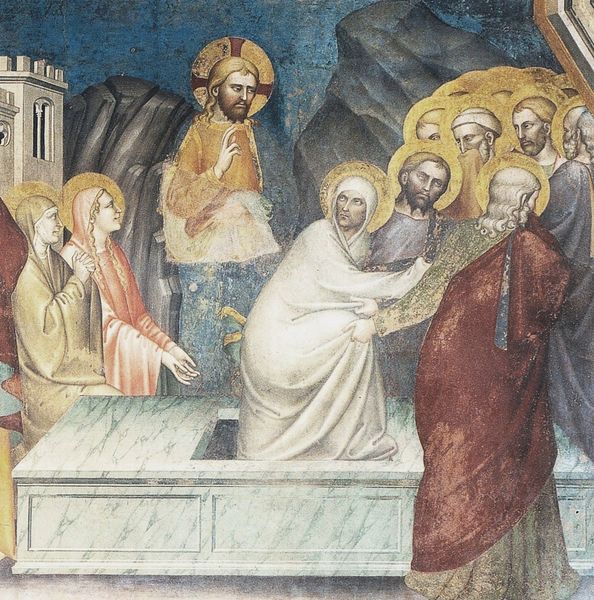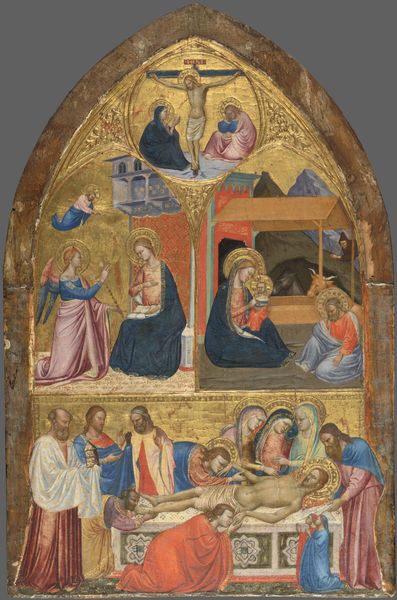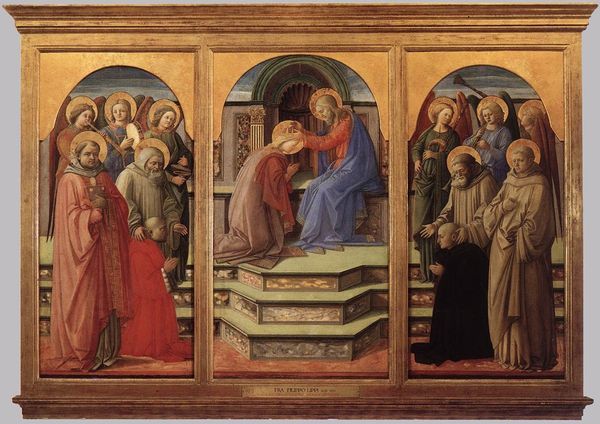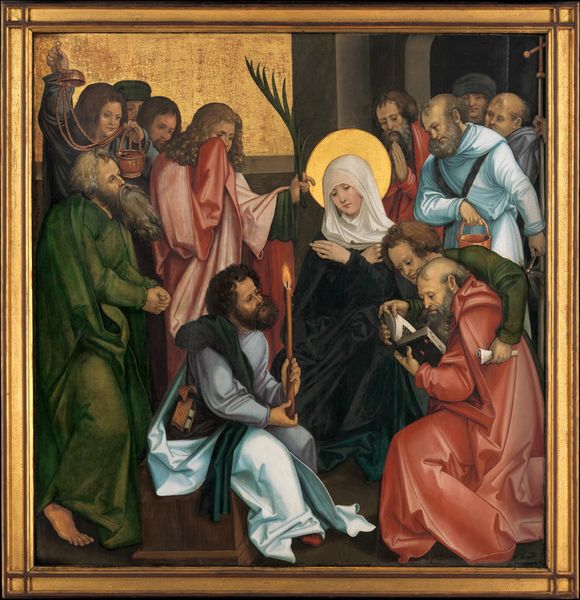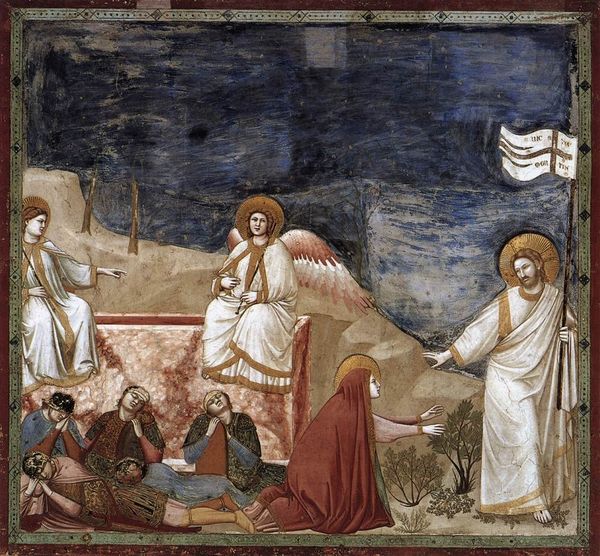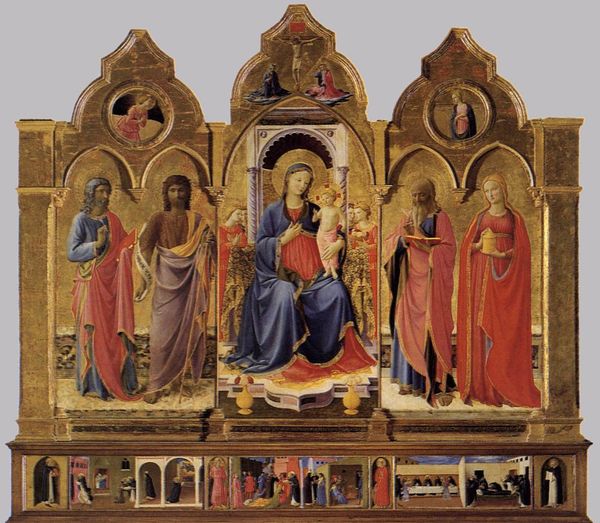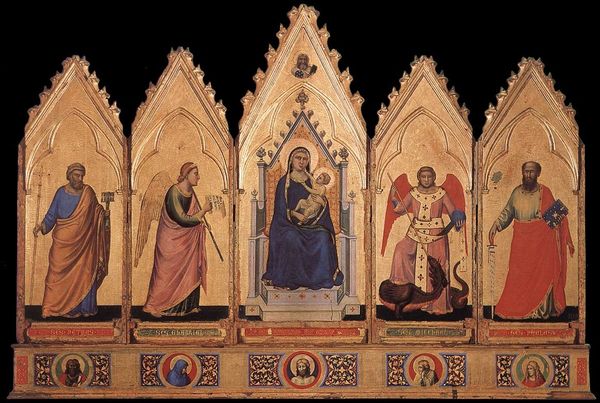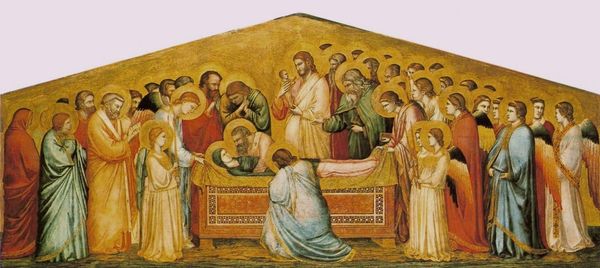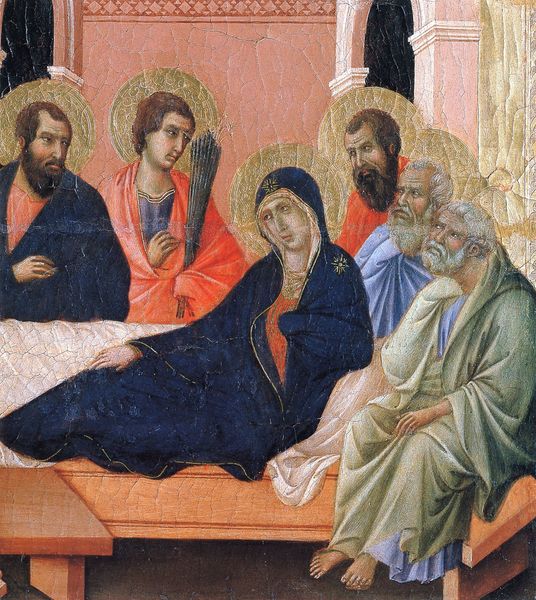
tempera, painting, fresco
#
portrait
#
tempera
#
painting
#
sculpture
#
holy-places
#
figuration
#
fresco
#
traditional architecture
#
jesus-christ
#
christianity
#
history-painting
#
italian-renaissance
#
christ
Dimensions: 200 x 185 cm
Copyright: Public domain
Giotto’s ‘Pentecost’ was painted directly onto the wall of the Scrovegni Chapel using the fresco technique. This involved applying pigment to wet plaster, which, as it dried, would bind the colors into the wall itself. The architecture, figures, and details within the scene were built up through careful layering of earth pigments, each tone demanding specific knowledge and skill to apply at the right moment, and in the right way. The artist and his workshop would have worked with masons, who prepared the walls, and pigment makers, who ground minerals and plants. Frescoes weren't just paintings. They were labor-intensive productions involving collaborative expertise. The seams between each days work are still visible. The halos, for instance, were made using *sgraffito*, or scratching through a layer of wet plaster to reveal a gilded surface underneath. Gold leaf itself would have been applied with care, burnished to a sheen. Looking closely at how and with what this mural was made reminds us that art isn't just about what we see, but also about the work and craft involved in making it.
Comments
No comments
Be the first to comment and join the conversation on the ultimate creative platform.

